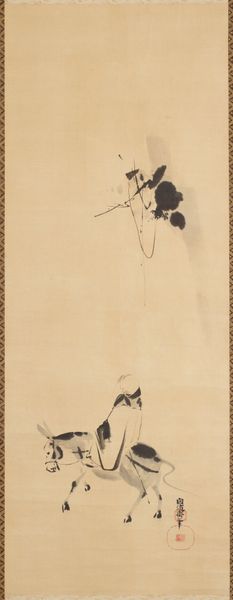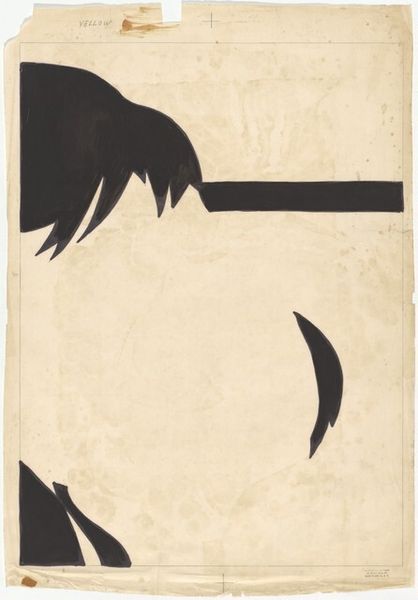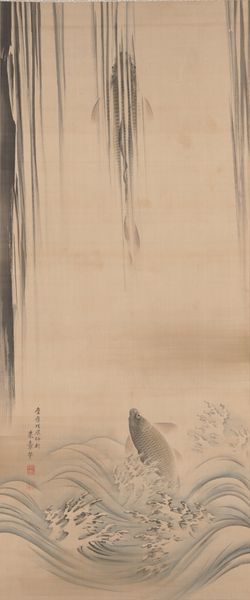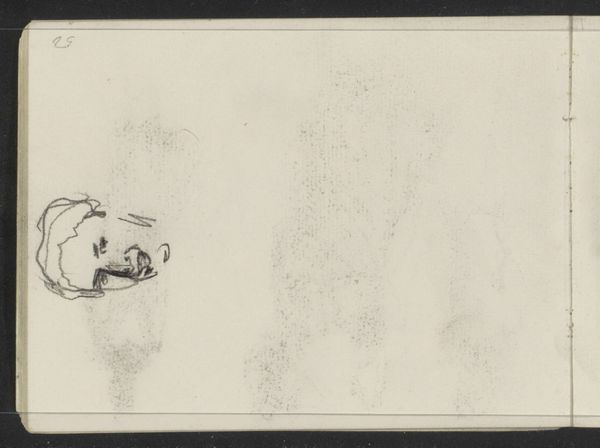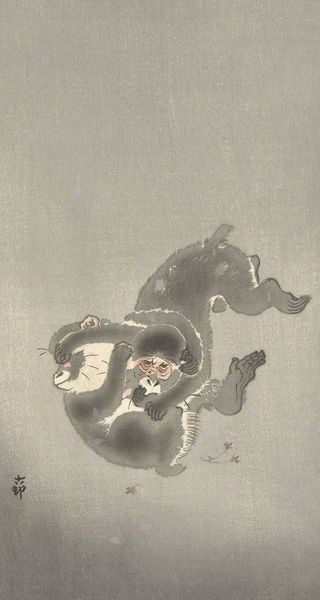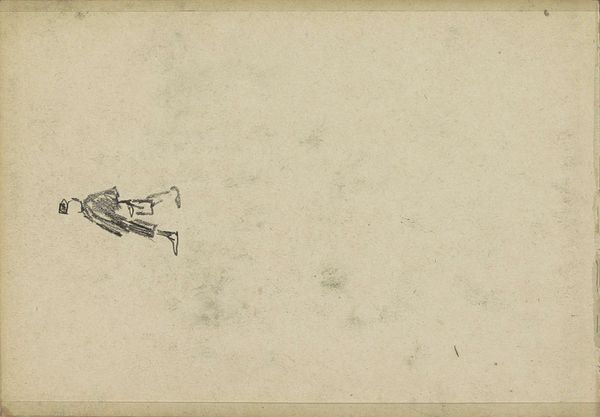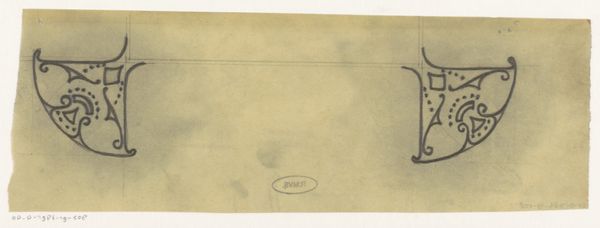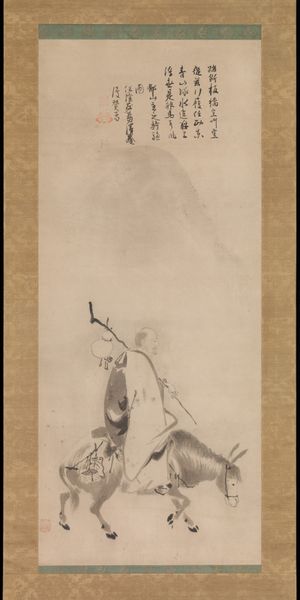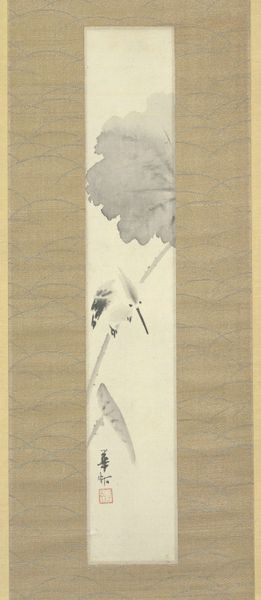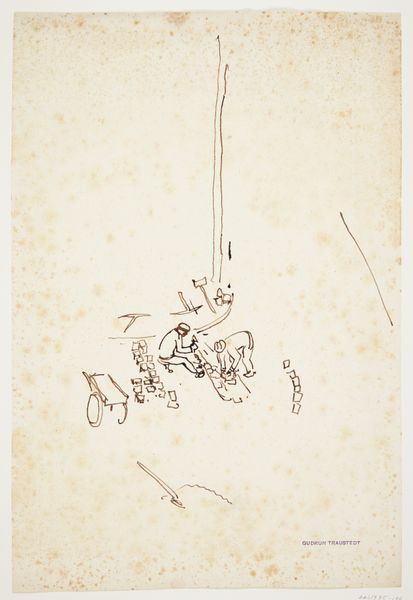
Kingfisher with Lotus and Reeds [left of a triptych of Zheng Huangniu c. 19th century
0:00
0:00
drawing, ink-on-paper, ink
#
drawing
#
asian-art
#
landscape
#
ukiyo-e
#
ink-on-paper
#
ink
Dimensions: 42 3/4 x 12 in. (108.59 x 30.48 cm) (image)72 3/4 x 16 1/2 in. (184.79 x 41.91 cm) (sheet)
Copyright: Public Domain
Curator: Looking at this vertical scroll, rendered in ink on paper, titled "Kingfisher with Lotus and Reeds" – part of a triptych, actually – painted around the 19th century, what are your initial thoughts? Editor: Strikingly minimalist. It feels raw, almost like a sketch, focusing the eye on the immediacy of its materiality. I see the fibres of the paper and how the ink interacts with that surface in such delicate gradations. Curator: Indeed. The artist, Kano Naonobu, masterfully uses ink to convey not just form but also deeper meaning. In Asian art, the lotus represents purity and enlightenment, emerging from muddy waters. Editor: But it's not idealized. It is very directly presented with few decorative elements. That bluntness speaks volumes about the process—the artist seems less concerned with perfecting form and more about capturing the essence of the subject. Curator: The kingfisher, though not prominently featured in this panel, further enriches the symbolic context. The kingfisher can be interpreted as a messenger, connecting different realms, but also evokes contemplation due to its stillness before diving into water. Its absence also enhances the appreciation of the lotus by creating a negative space for its symbolism to shine through. Editor: That sense of immediacy, which can be very demanding and requires enormous skill, wouldn't come across if Naonobu chose different tools, say something other than fibrous paper. It reminds us that these aesthetic decisions always involve specific materials and social networks to move them about for consumption. Curator: This economy of means forces us to consider what isn't depicted and consider it to be as important as what is depicted. It points to our human ability to interpret the natural world using emotional filters and projecting human significance on the surrounding, and, by extension, our collective and cultural values on art. Editor: Analyzing this artwork by considering materials and process really brings forth new questions regarding cultural transmission, doesn't it? Curator: Indeed. The artist has chosen specific culturally resonant imageries and paired it with incredible skills, resulting in its viewers' participation, whose personal associations give the scene renewed cultural relevance with time. Editor: Well, my attention is fixed on ink application and on this wonderful texture it builds as it merges and sits atop its carrier substrate of the paper. Curator: A fulfilling duality that makes "Kingfisher with Lotus and Reeds" an enduring subject of analysis!
Comments
No comments
Be the first to comment and join the conversation on the ultimate creative platform.

